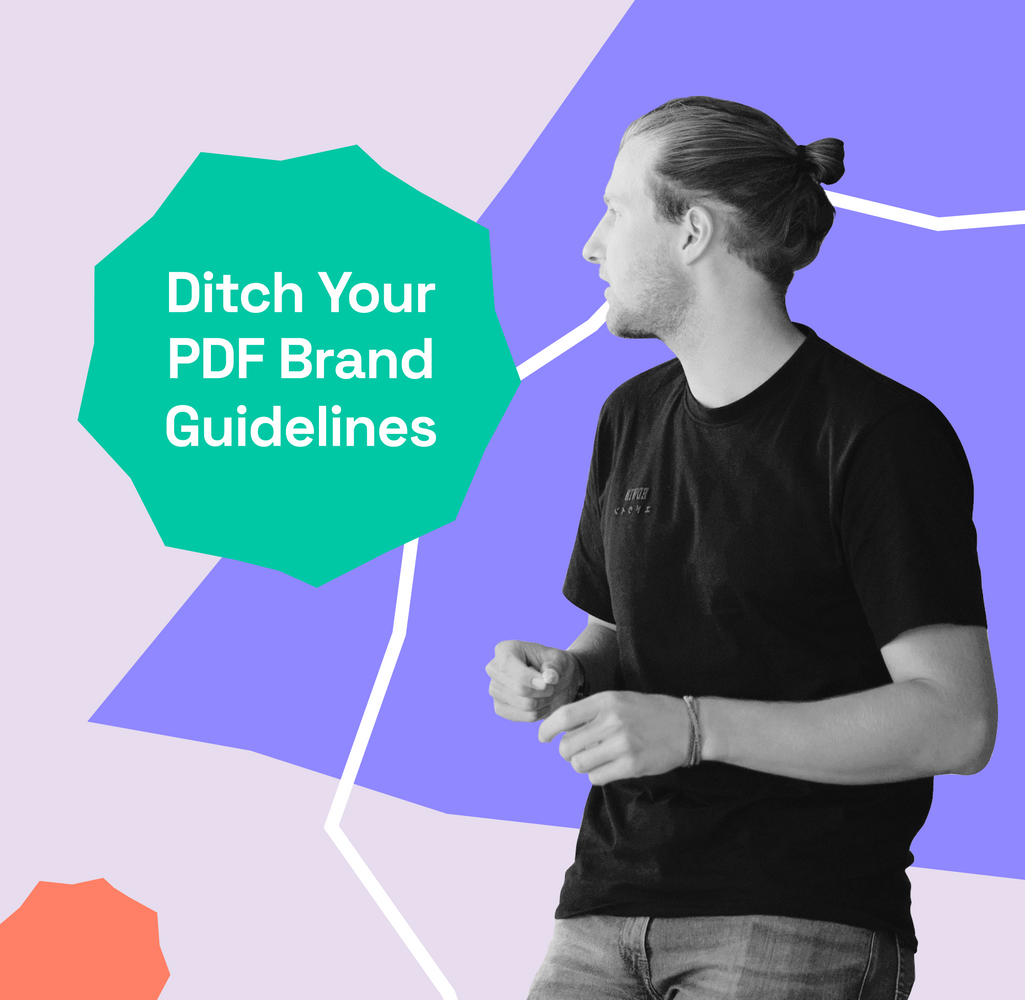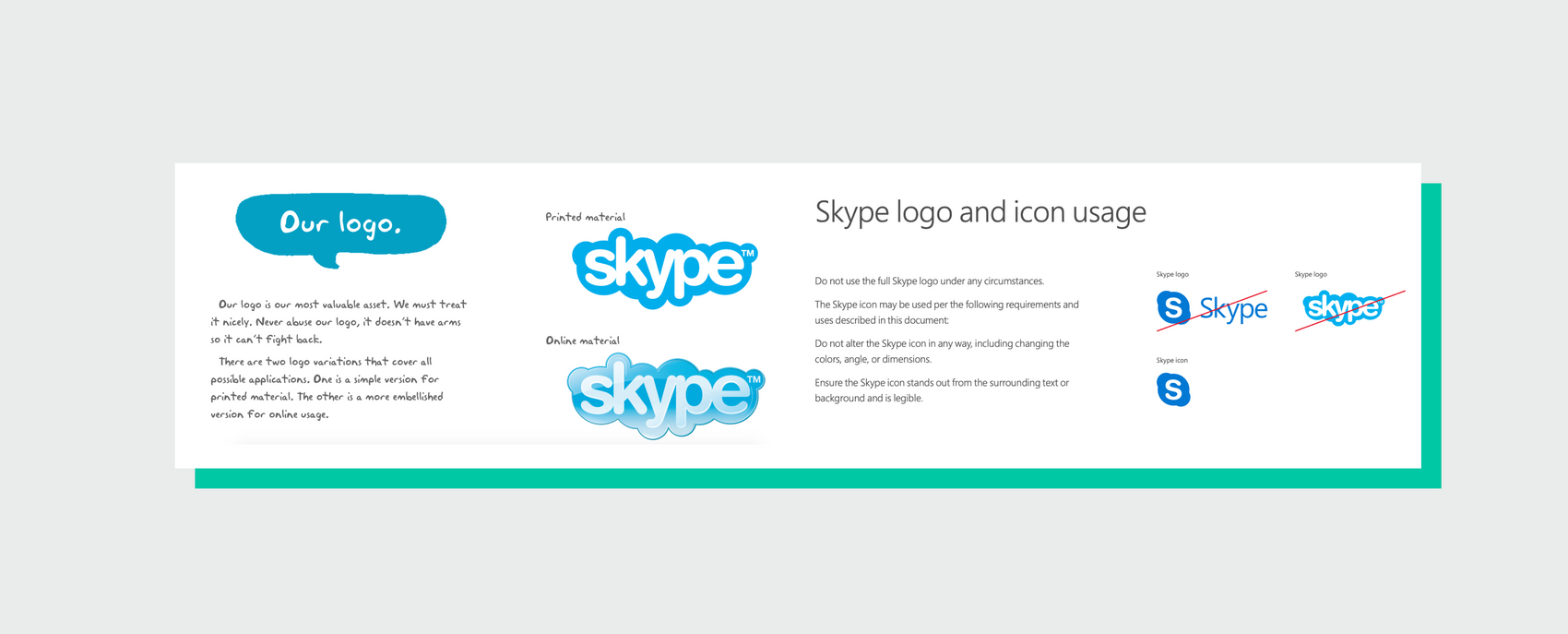
Transition from PDF to Digital Brand Guidelines
Is a 20+-year-old file format still the best home for your brand guidelines? Take your guidelines online so they’re easier to find, use, and update.
Keeping employees on-brand is a common challenge for businesses. Our State of Brand Ownership report found that 67% of respondents admit to using specific brand and creative guidelines within their teams that aren’t part of the company’s official guidelines. Employees depart from the company line when they can't access marketing collateral or track down the brand guidelines PDF document.
PDFs have long been the go-to option for branding books. In 2007 the International Standards Organization (ISO) created the first open standard for the technology. They explained, “standardization is vital to PDF’s magic as it enables it to look and function the same way everywhere, regardless of the location or software used.” But PDF brand guidelines may actually be holding you back, making it more difficult to update, develop, and refine your brand.
Brand guidelines PDFs may be the popular choice, but they’re not the best option for your brand. But what are the problems with PDF brand guidelines, and what can forward-thinking brand builders use instead?
PDF Brand Guidelines? They’re fine, but they don’t evolve with your brand
Your brand is constantly growing and evolving, so a static file format like a PDF can stifle that development. And even if you manage to keep your guidelines updated, employees can have a hard time tracking down the latest version.
When you send around your brand guideline PDFs, employees will most likely download the file, upload it to a shared drive, or leave it in their emails. Then, when they need to use the guidelines, they have to hunt through emails and files, with no way of knowing whether the version they're looking at is up to date.
Employees lose a lot of time searching for documents they need to do their jobs. According to a study of 1,000 U.S.-based knowledge workers, “54% of respondents said that they spend more time digging for documents than replying to email.”
If an employee is looking at 'Brand_Guidelines_May_2021', how can they tell whether that's the latest version or if there's another document they haven't found yet from later in the year? They could keep searching and waste even more time, or they could use the version they've found. But doing so could mean they end up using outdated product messaging or old logos, which creates inconsistencies in your branding.
Employees in your marketing or branding teams lose even more time, repeatedly sending out the latest version of your guidelines and fixing branding mistakes introduced by team members working from outdated guidelines.
PDFs are static documents, but your brand develops and changes over time. So more often than not, your PDF brand guidelines are out of date, because it’s inefficient to keep editing a static file. As a result, the majority of your team members are likely to work from old versions of your brand guidelines, which makes it difficult to achieve a consistent, authentic presentation of your brand.
Even worse, outdated versions can hang around for much longer than you realize once your brand guideline PDFs are out in the world – uploaded to your website, emailed to employees, and shared with external agencies and partners.
For example, a Google search for ‘Skype brand guidelines’ brings up a link to Skype’s brand guidelines PDF as the first search result, a second result from Skype, and a third result from Microsoft:

As Skype was acquired by Microsoft way back in 2011, the Skype brand book in the first search result is outdated. The second and third results are the correct guidelines, with the Microsoft guidelines linking back to the second Skype result. But it would be easy to assume the top result is still in use, as it’s on the Skype domain and covers the company brand in a lot of detail. With the old guidelines so easy to find, freelancers, agencies, and even employees could use outdated brand assets like the old logo or color palette in their work.

A freelancer or agency working with you may prefer to Google your brand guidelines rather than ask for them yet again, and a new employee will find it easier to search online than hunt through all your files or ask your marketing team for help.
Relying on PDF brand guidelines can lead to a confusing presentation of your brand to the market. If different parties use different versions of your guidelines, they’ll introduce inconsistencies into your design, messaging, and style. Thankfully, companies have another option – using online brand guidelines.
Cloud-based brand guidelines? they’re easy to find & always up to date
Our State of Brand Ownership report surveyed 759 people across brand, marketing, front-end development, UX, and design teams. 85% of respondents believe their company brand would be stronger if the official brand guidelines were shared across the organization. Cloud-based brand guidelines achieve that by providing a centralized online home for your guidelines.
Instead of saving PDF documents to your desktop, in Google Drive, or storing them in your emails, you have one online link employees can bookmark. Now, you have a permanent online home for your guidelines, making them easier for employees, partners, and external agencies to find. A single, centralized home for your brand guidelines saves employees a lot of time they'd otherwise spend searching for your brand guidelines.
Additionally, any updates to your cloud-based brand guidelines automatically sync to all users. Holger Castritius, Head of UX at E.ON, explained that since E.ON stopped using PDF brand guidelines and switched to using Frontify’s cloud-based Brand Guidelines, “our brand guidelines are always up-to-date and they’re easy to use – to share and to collaborate on.” Any changes are immediately visible to everyone, which means you don’t need to worry about employees using old versions of your guidelines or brand assets.
Cloud-based brand guidelines become a single source of truth for your brand identity. They help improve brand consistency internally and externally, as all your employees, freelancers, agencies, and other partners share the same set of online guidelines.
For example, our brand guidelines are online and timestamped, so you can see when they were last updated. We send regular Brand Updates too, so that our team is always aware of how our brand is evolving and has access to the latest assets and information. In addition, we made our guidelines easy to navigate with a sidebar so our team can jump to the section for the brand elements they need as quickly as possible. You can also download our brand assets straight from our guidelines, which you can't do with a PDF.

Using online brand guidelines rather than a static PDF document means your guidelines can become a practical tool, rather than just a document for your team to read through. You can show examples of what is (and isn’t) on-brand and provide guidance and examples of using brand elements in different scenarios or channels.
Brand Guideline PDFs are holding your team (& your brand) back
Your employees want to be part of building your brand. And they need to be, if you want your brand to become strong in the minds of your customers – because a brand needs the people behind it to act as advocates for its mission and values, and bring the brand to life.
But keeping your guidelines in a file format that's difficult to find, search, and use puts barriers in your team's way. Having a single, central home for your guidelines will improve creative consistency across every team and project in the company to present a consistent brand identity to your customers and the market.
Using cloud-based guidelines enables you to seamlessly evolve, adapt, and grow your brand without leaving anyone behind. Help your team find and use your brand guidelines by letting go of your old PDFs and bringing them into a centralized online platform instead.
